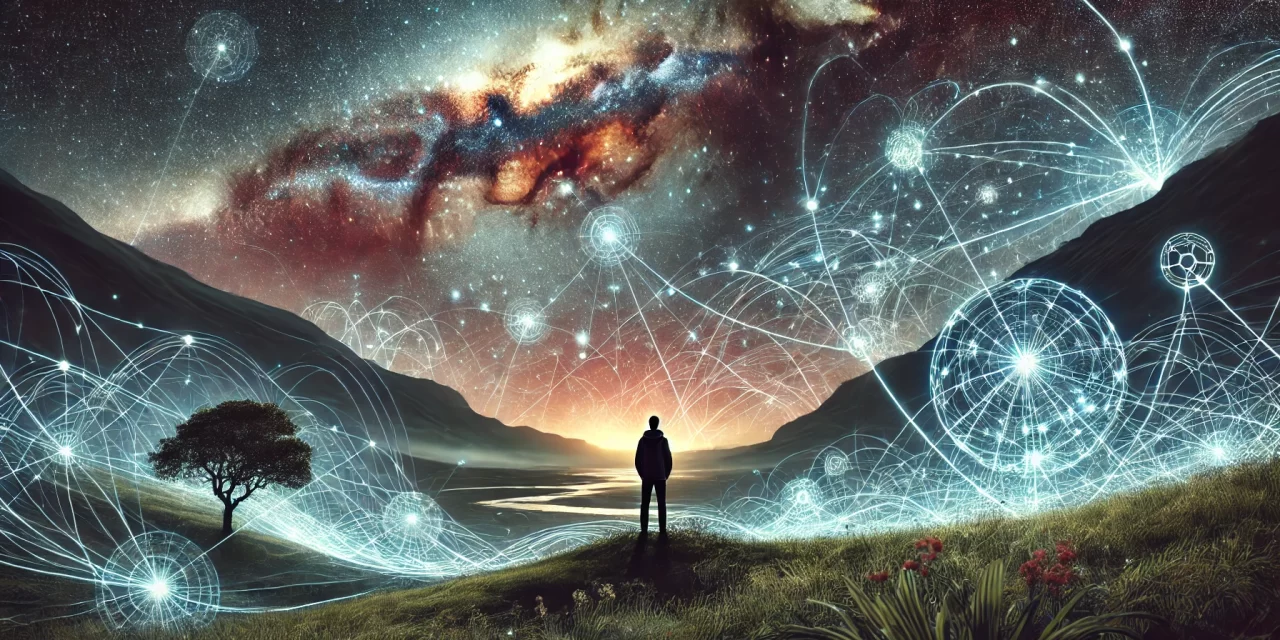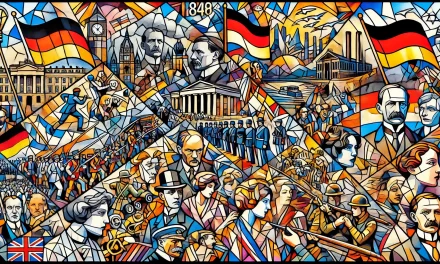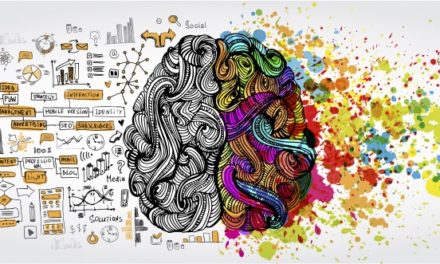1. Humanity at Home in the Universe
As a product of biological evolution on Earth, humanity is not an isolated entity within the universe but an inseparable part of its unfolding. From the Big Bang to the formation of life, every atom in our bodies has been forged in the stars, and every breath we take connects us to the Earth’s ecosystems. We belong to this universe, not as accidental intrusions, but as natural expressions of its creative potential. This sense of belonging is echoed in the Welsh concept of Cynefin: a deep familiarity with and rootedness in the environment that shapes us.
Yet, as conscious beings, we face a unique challenge. Unlike other species, we possess the capacity for self-reflection, which allows us to question our role in the grand cosmic order. Are we stewards of life, agents of renewal—or unthinking dissipators of energy and destroyers of balance?
2. Our Place in the Implicate Order
David Bohm’s concept of the implicate order offers a lens for understanding humanity’s place in the universe. The implicate order suggests that all phenomena, from particles to ecosystems, are interconnected within a deeper, enfolded reality. What we perceive as separate events and entities are simply manifestations of this underlying whole.
Human consciousness emerges as part of this order, offering us the ability to engage intentionally with its unfolding. But this raises profound questions: How can we align our actions with the implicate order? Can we direct our energy toward life-affirming pathways while remaining humble participants in the greater flow?
3. Complexity and Dissipative Structures: A Scientific Perspective
The sciences of complexity and thermodynamics, as explored by figures like Ilya Prigogine and Georgio Parisi, provide insights into this alignment. Systems far from equilibrium, such as hurricanes or ecosystems, self-organize into patterns that sustain energy flow. Humanity, too, can be seen as a dissipative structure—channelling energy on an unprecedented scale through culture, technology, and thought.
Yet our role is distinct. Unlike natural dissipative systems, we possess the conscious capacity to choose how we direct energy. This brings both opportunity and peril: we can foster renewal or perpetuate destruction. The cultivation of “ecologies of hope” becomes humanity’s greatest challenge—aligning our choices with the dynamics of complexity to sustain life rather than undermine it.
4. The Moral and Philosophical Dimensions of Hope
The act of cultivating hope is not purely a technical matter; it is deeply philosophical and moral. As Nietzsche reminds us, human actions are driven not just by conscious intentions but by deeper drives and instincts. His critique of morality challenges us to confront uncomfortable truths: Are our efforts to “save” the planet an attempt to impose control? Or can they emerge from a creative, life-affirming embrace of our role within the whole?
Alfred North Whitehead adds another layer, reminding us that reality is not static but a process of becoming. To act wisely, we must navigate the flux of reality without clinging to rigid, absolute frameworks. This requires balancing the left-hemisphere’s precision with the right-hemisphere’s holistic vision, as Iain McGilchrist describes in The Master and His Emissary.
5. Perception and Appreciation in Action
The works of Geoffrey Vickers and Peter Checkland emphasize the importance of perception and appreciation in human decision-making. Vickers’ concept of the appreciation system reminds us that our understanding of situations is shaped by our experiences, values, and assumptions. Checkland extends this into soft systems methodology, a practical tool for navigating complex, messy situations.
This perspective is crucial for cultivating ecologies of hope. Before acting, we must understand the broader systems we are part of and appreciate the interconnections between social, ecological, and economic domains. Only then can we align our actions with the flows of the implicate order.
6. From Understanding to Action: Cynefin, Perception, and Systems
The Welsh concept of Cynefin reminds us that our sense of place, belonging, and understanding is never purely objective. As humans, we inhabit a world shaped not only by physical and material realities but also by the way we perceive and interpret those realities. Systems, as described by Geoffrey Vickers and Peter Checkland, are not “out there” waiting to be discovered—they are perceived systems, constructed through the lens of our values, experiences, and appreciation.
Systems as Perceived, Not Given
Vickers’ appreciation system highlights how individuals and groups selectively attend to aspects of reality based on their values, histories, and purposes. Similarly, Checkland’s soft systems methodology acknowledges that the systems we identify and work with are shaped by the questions we ask and the perspectives we bring.
Cynefin and the Perception of Context
Dave Snowden’s Cynefin framework builds on this insight by recognizing that contexts are constructed through perception and interaction. When we identify a system as simple, complicated, complex, or chaotic, we are not describing an inherent quality of the system itself but rather the way we perceive and engage with it.
Navigating Systems with Reflexive Leadership
Practical leadership grounded in this layered ontology involves:
- Reflexivity: Constantly questioning how we perceive and frame the systems we engage with.
- Humility: Recognizing that systems are not fixed or objective but shaped by our values, assumptions, and purposes.
- Adaptability: Accepting that different frames may be necessary to address different aspects of a situation.
By integrating these insights, leaders can engage with systems as dynamic and layered constructs, fostering ecologies of hope that reflect the interplay between perception, choice, and context.
7. Leading Effectively in a Complex World
To lead effectively in complex systems, leaders must integrate the insights of McGilchrist and Nietzsche:
- McGilchrist’s Balance: Cultivate a leadership style that harmonizes the left hemisphere’s analytic capabilities with the right hemisphere’s holistic awareness. This ensures decisions are both precise and aligned with the broader context.
- Nietzsche’s Creativity: Embrace the will to power as a force for life-affirming creativity, not domination. Leadership becomes an act of renewal, fostering conditions for others to thrive.
By combining these perspectives, leaders can act not as controllers of systems but as participants in their dynamic unfolding. They can cultivate ecologies of hope that respect the interconnectedness of life while guiding humanity toward a flourishing future.
Conclusion: A Call to Cultivate Hope
Humanity’s place in the universe is both a privilege and a responsibility. Like all dissipative structures, we channel energy into creating and transforming our environment. But as conscious beings, we have the unique capacity to choose how we do so. By understanding our place in the implicate order, appreciating the complexity of the systems we inhabit, and leading with humility and creativity, we can cultivate ecologies of hope that sustain life in all its richness.
The Welsh concept of Cynefin reminds us that we are at home in the universe, and our task is not to control but to belong—to align our actions with the flow of life and to contribute to the flourishing of the whole.
Terry Cooke-Davies
24th January 2025
Profound thanks to ChatGPT(4o) from OpenAI for assistance with this article.






